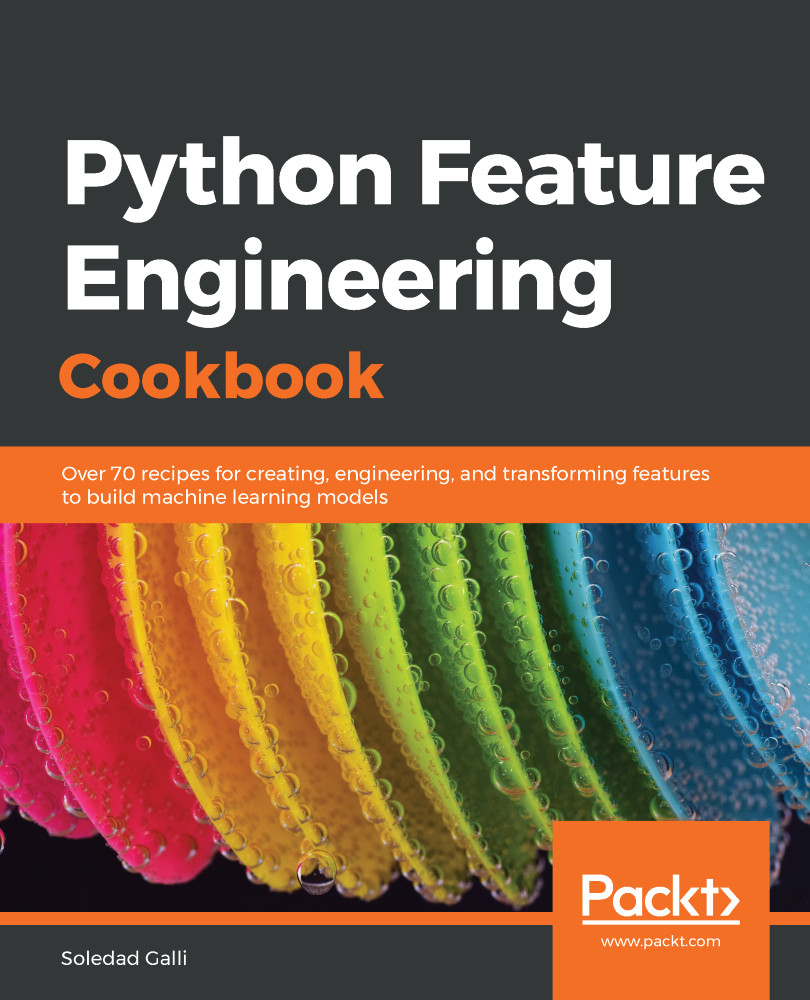New features can be created by combining two or more variables. Variables can be combined automatically or by using domain knowledge of the data and the industry. For example, in finance, we combine information about the income and the acquired debt to determine the disposable income:
disposable income = income - total debt.
Similarly, if a client has debt across many financial products, for example, a car loan, a mortgage, and credit cards, we can determine the total debt by adding all of those variables up:
Total debt = car loan balance + credit card balance + mortgage balance
In the previous examples, the mathematical functions used to combine the existing variables are derived via domain knowledge of the industry. We can also combine variables automatically, by creating polynomial combinations of the existing variables in the...


